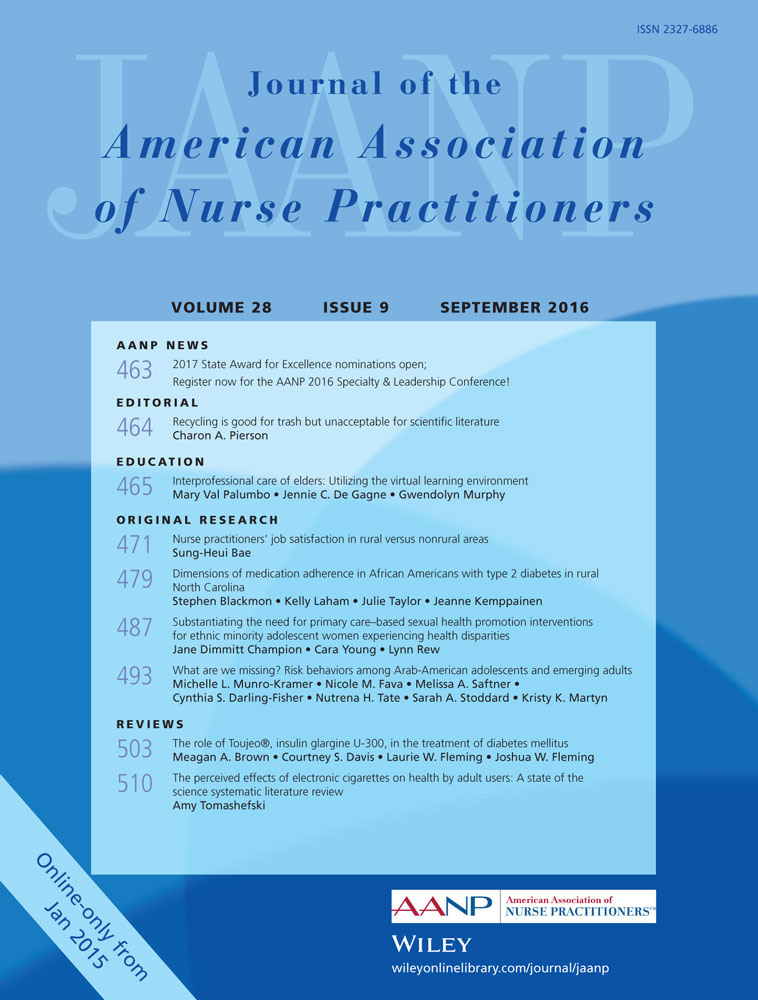Dimensions of medication adherence in African Americans with type 2 diabetes in rural North Carolina
Abstract
Purpose
Personal perceptions and beliefs are one of the least studied patient factors influencing medication adherence. This study explored adherence experiences of rural African Americans with type 2 diabetes in rural southeastern North Carolina.
Methods
Social–ecological theory guided a mixed methods approach. The Morisky Medication Adherence Scale (MMAS) assessed adherence. Clinical variables (HgA1c, fasting glucose levels, current medications) were obtained from medical records. Pearson correlation coefficients examined associations between demographics, clinical variables, and MMAS scores. Narrative data obtained from open-ended questions were analyzed through content analysis.
Results
The study enrolled 45 rural residents with longstanding type 2 diabetes (11 years, 31% on insulin). The majority of MMAS scores (63%) reflected low adherence (<6); 30% averaged moderate adherence (6 to <8). Males had poor metabolic control (HgA1c 9.0); female glycemic control was moderately good (7.2). Adherence was associated with having health insurance (r = .594, p = .001) and working for pay (r = .440, p = .05). Participants frequently underused medications without consulting a provider; financial limitations served as a major barrier. Perceptions that diabetes only occurs when “sugar is high” are inconsistent with the course of this chronic disease.
Conclusions
High levels of nonadherence remain a major challenge for nursing care providers in economically distressed rural counties.




